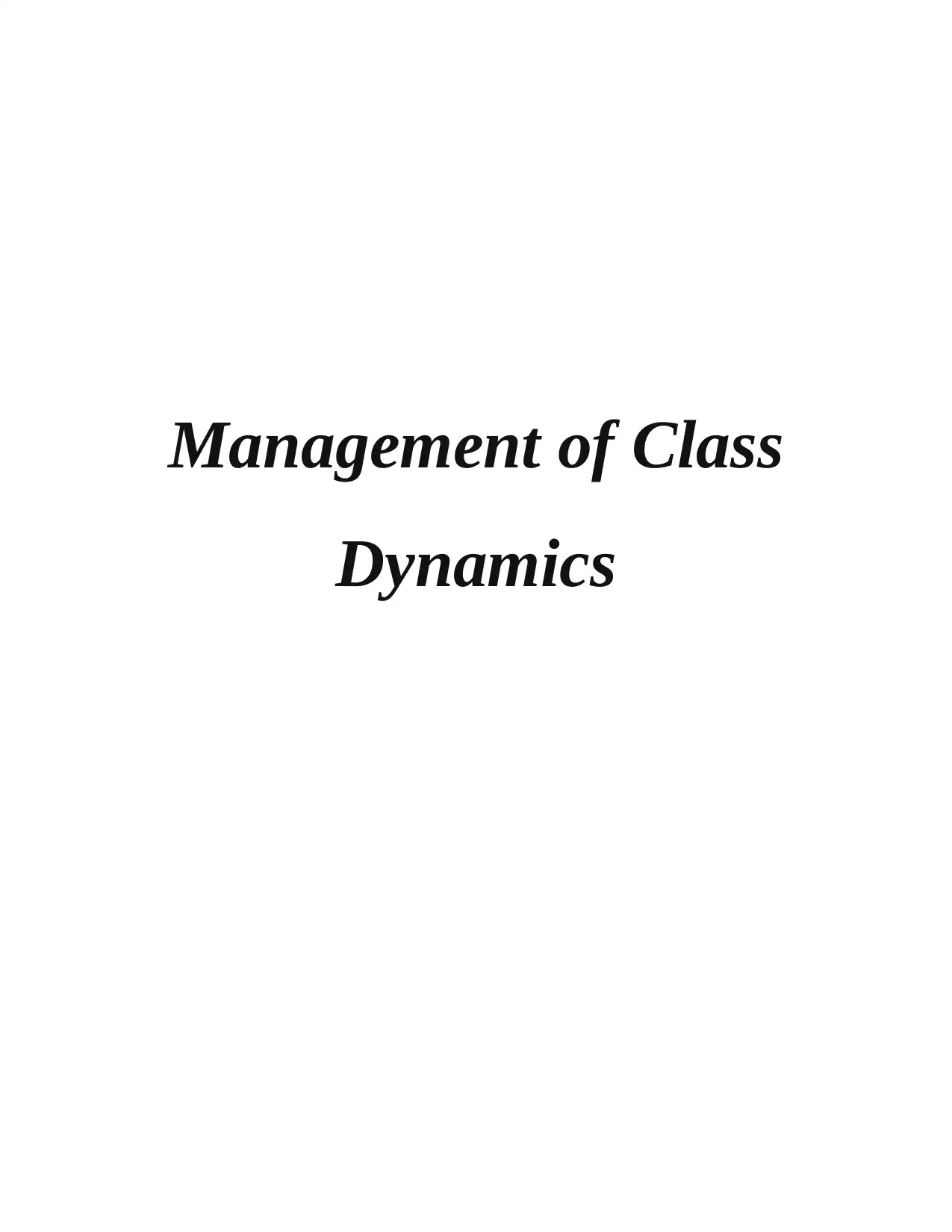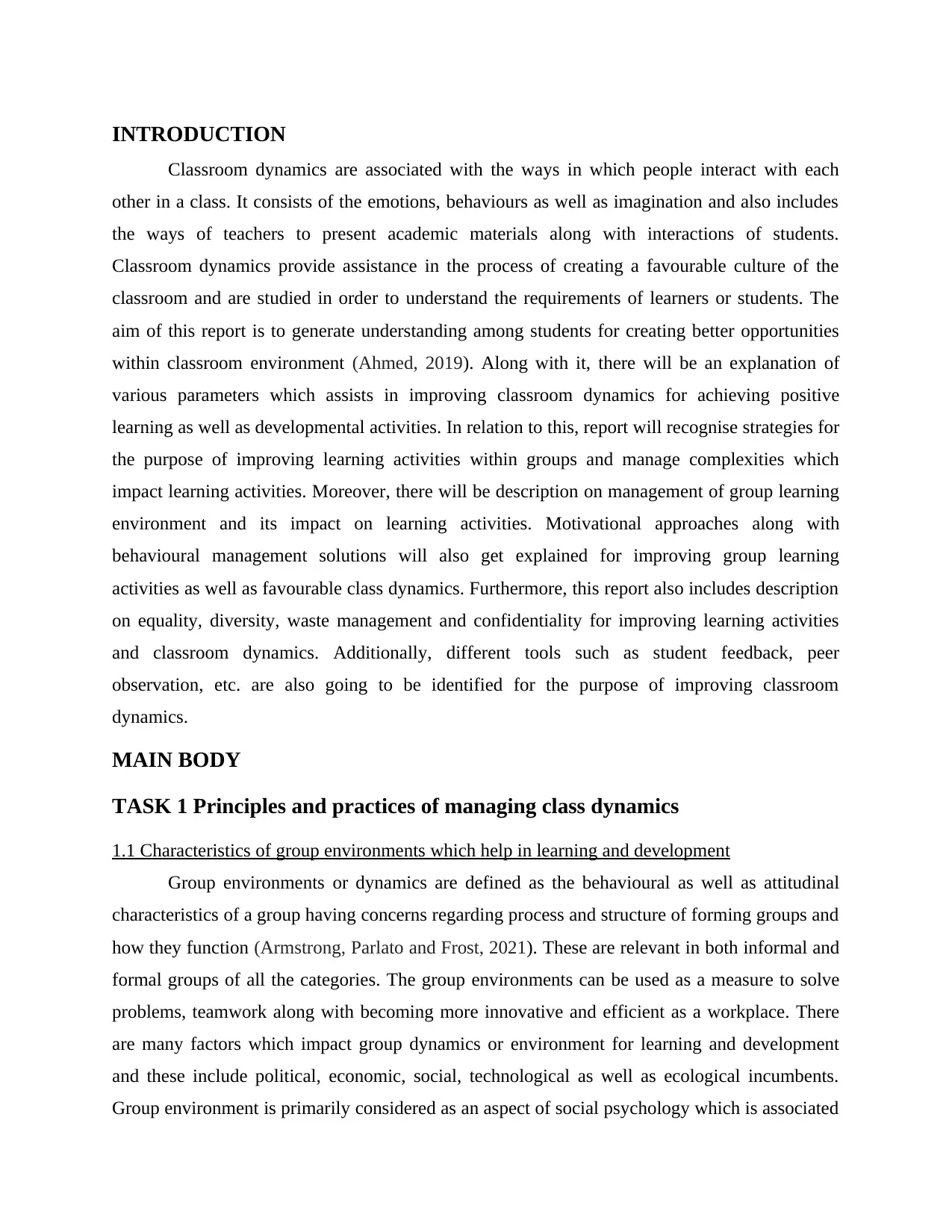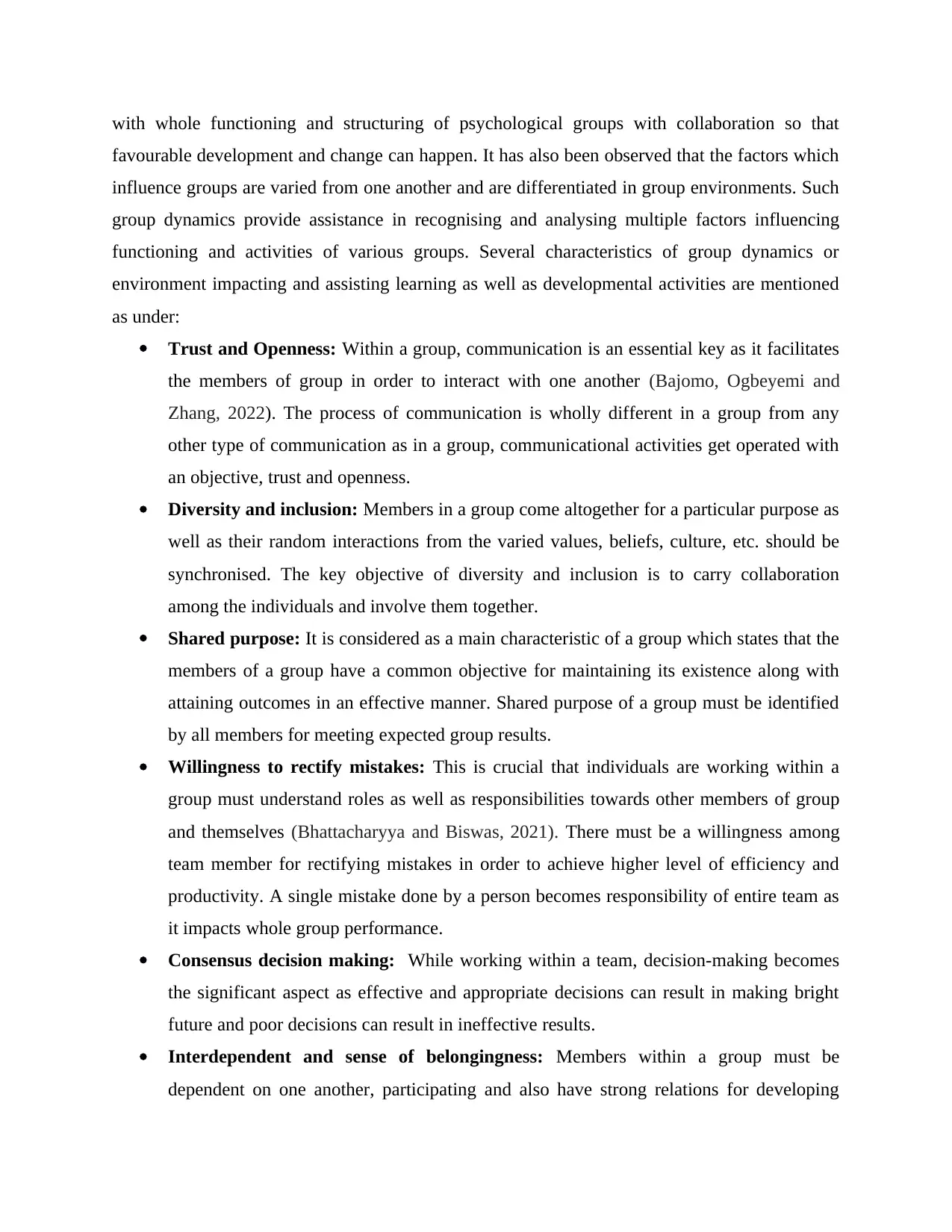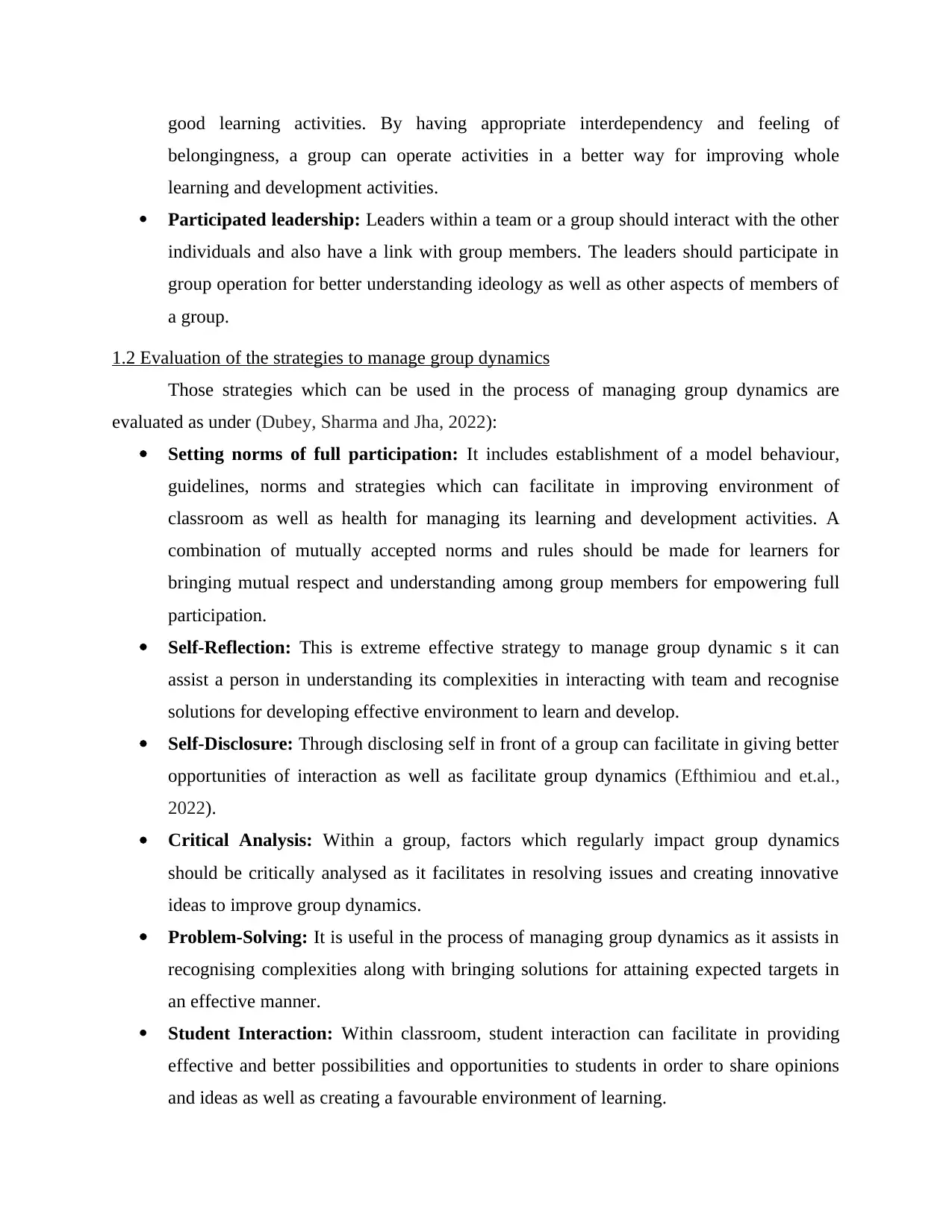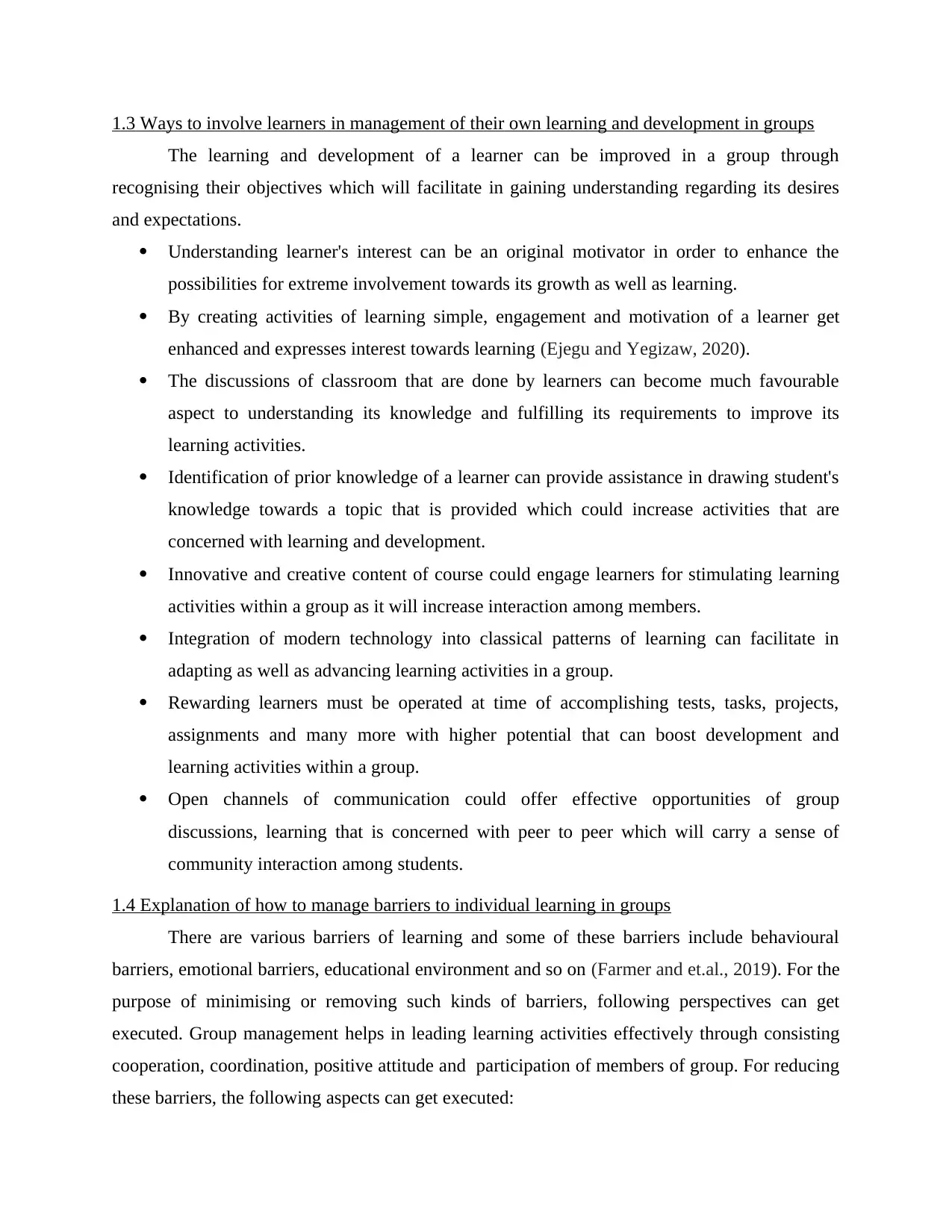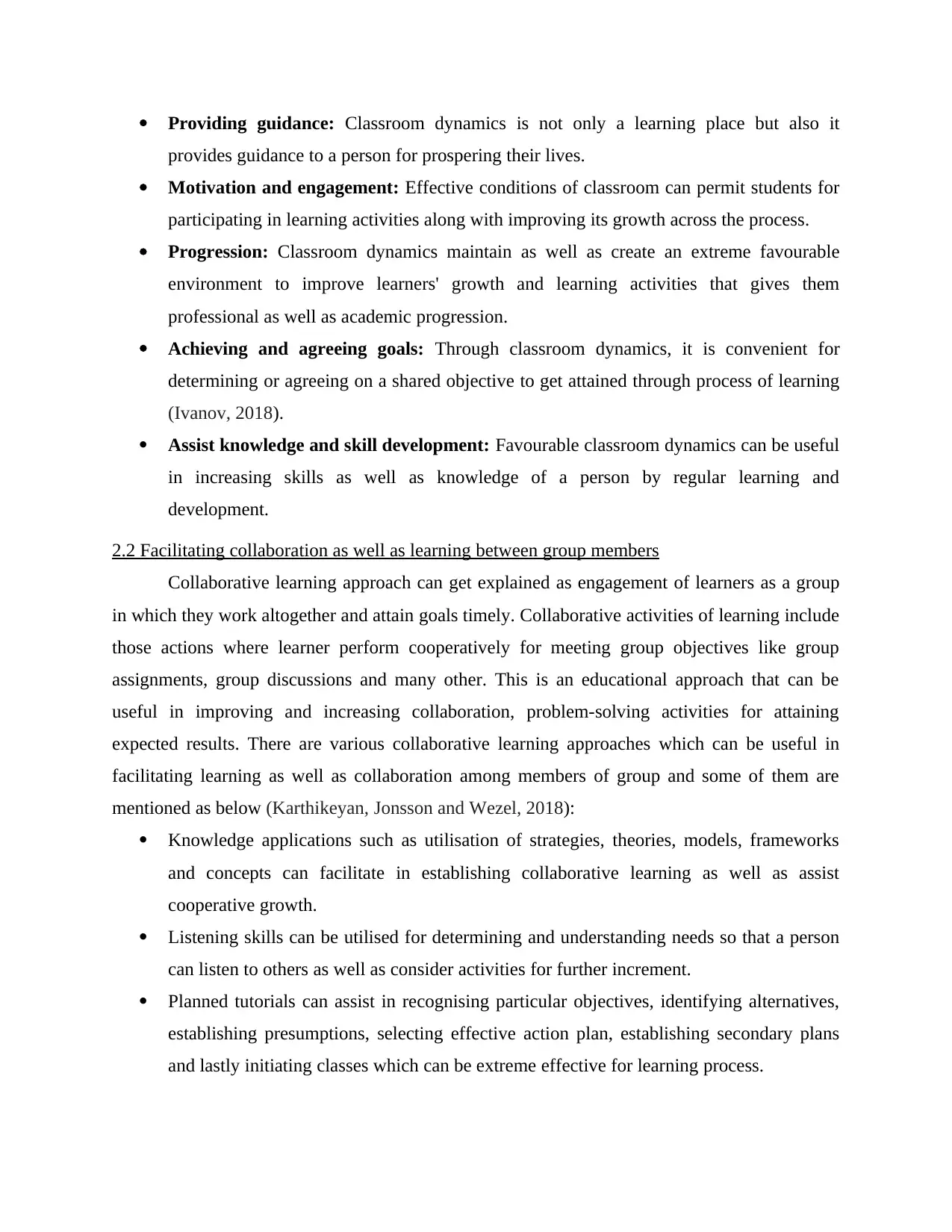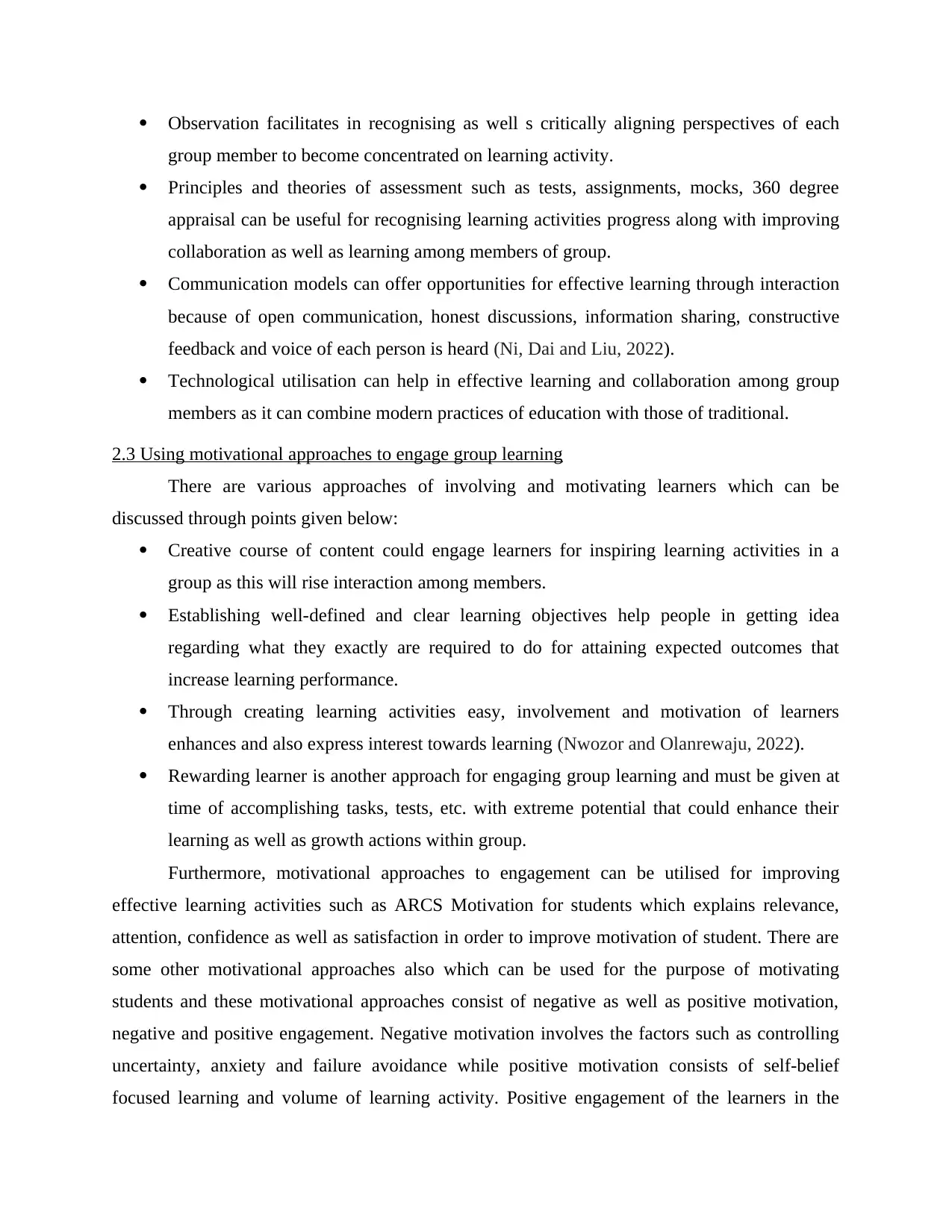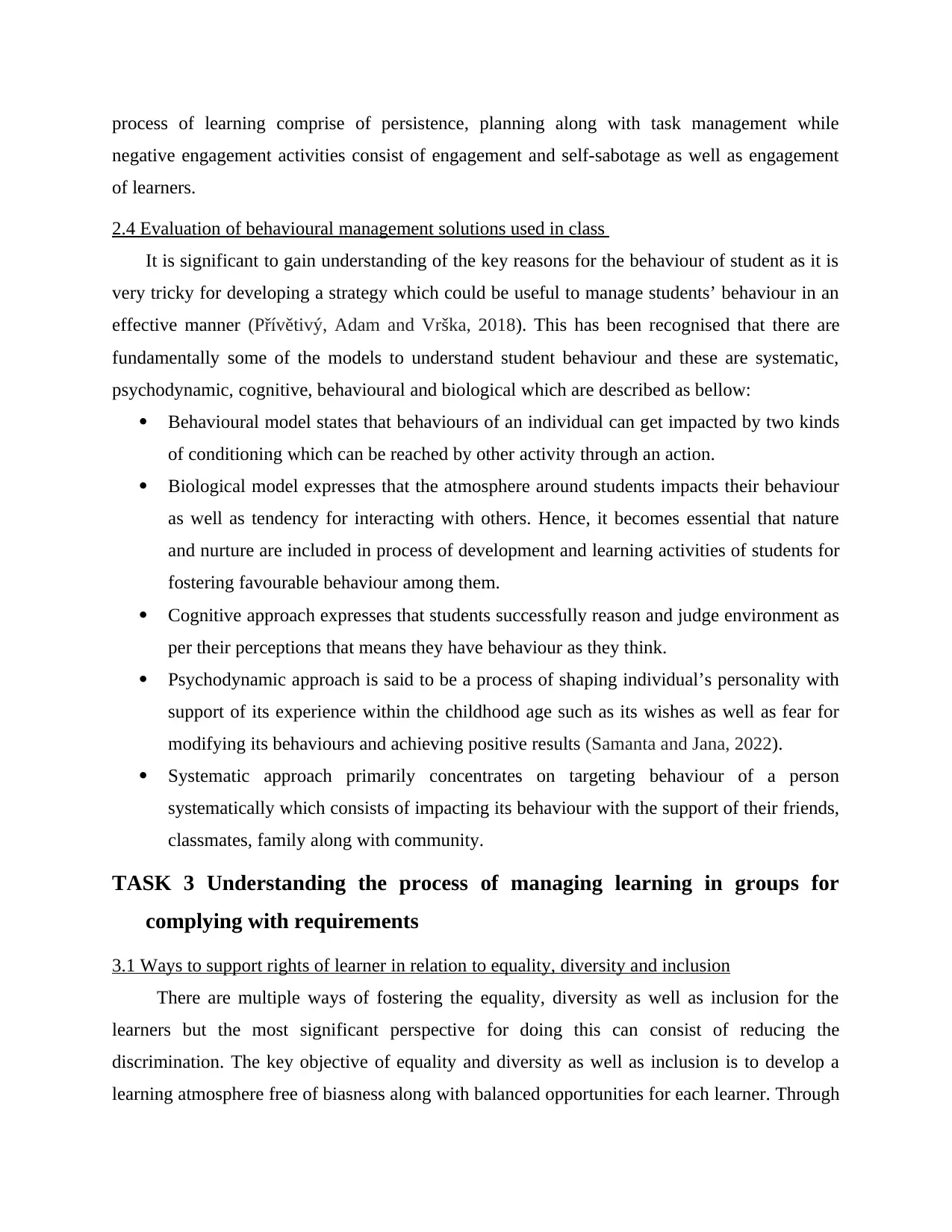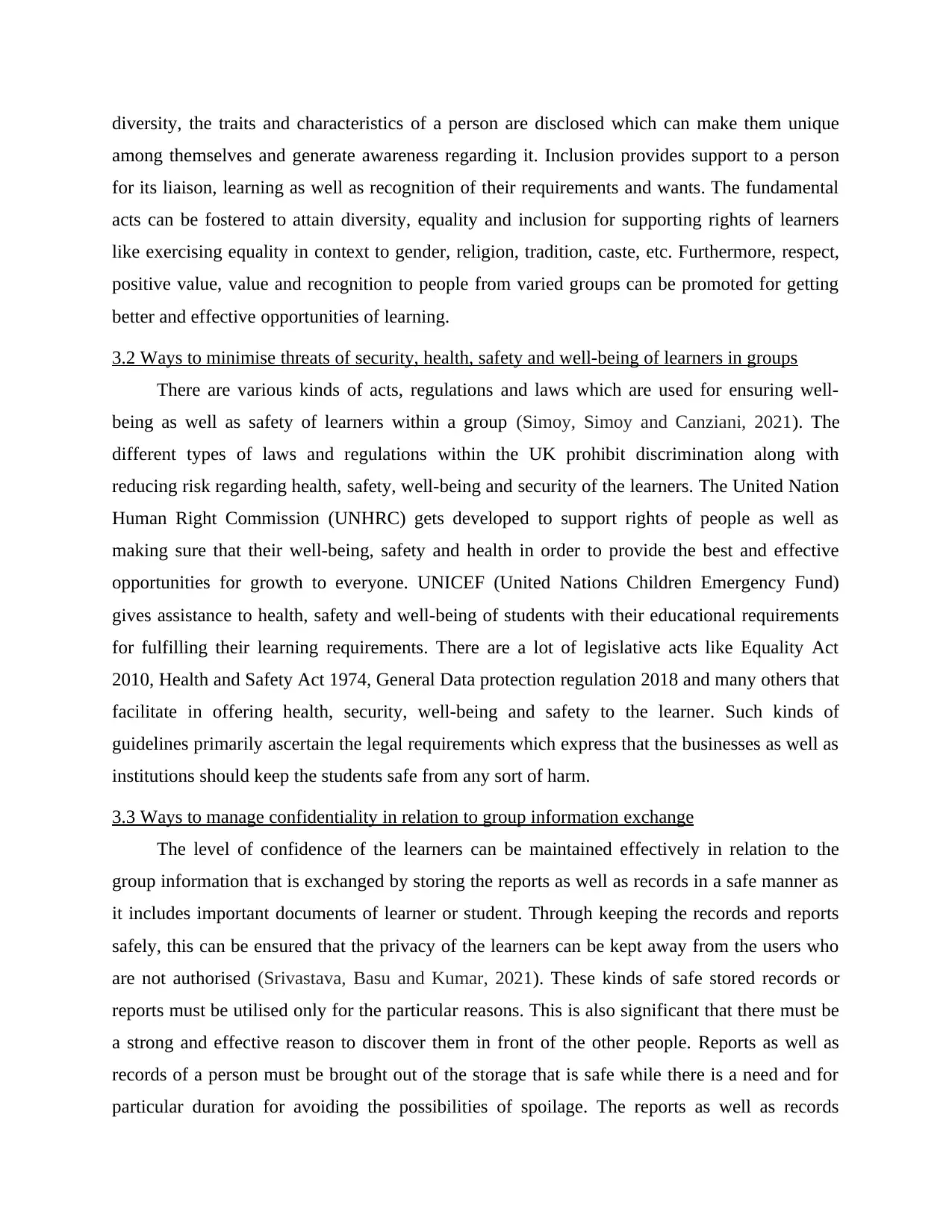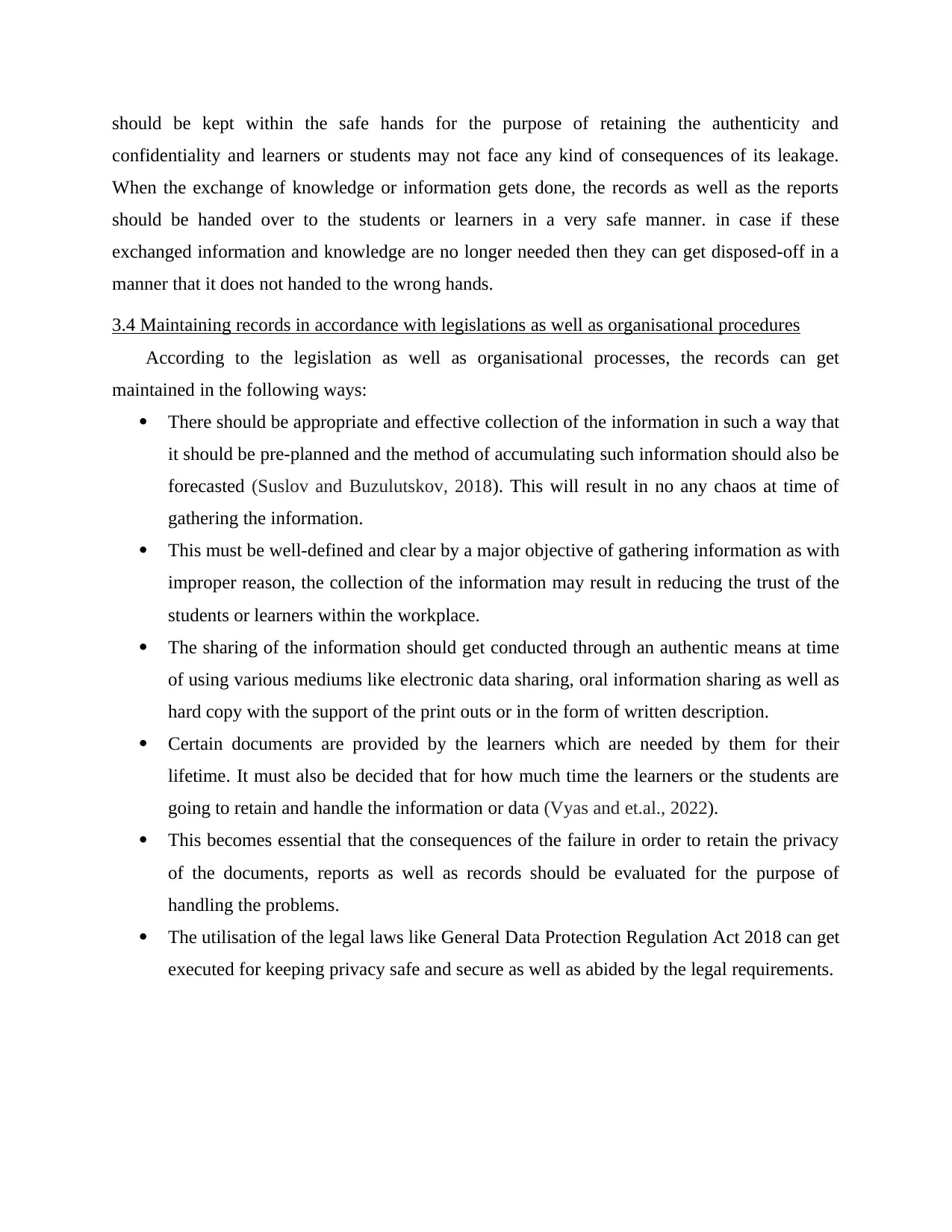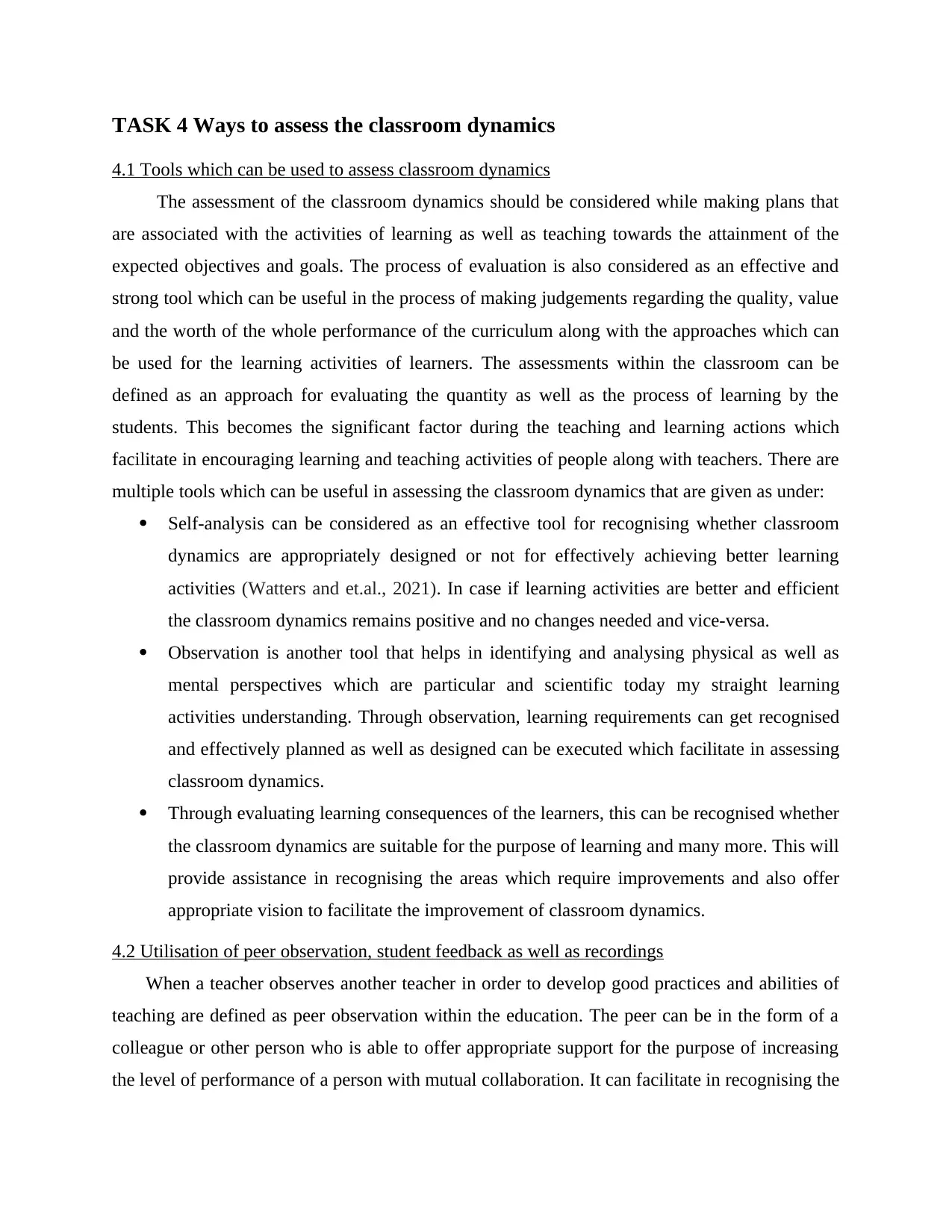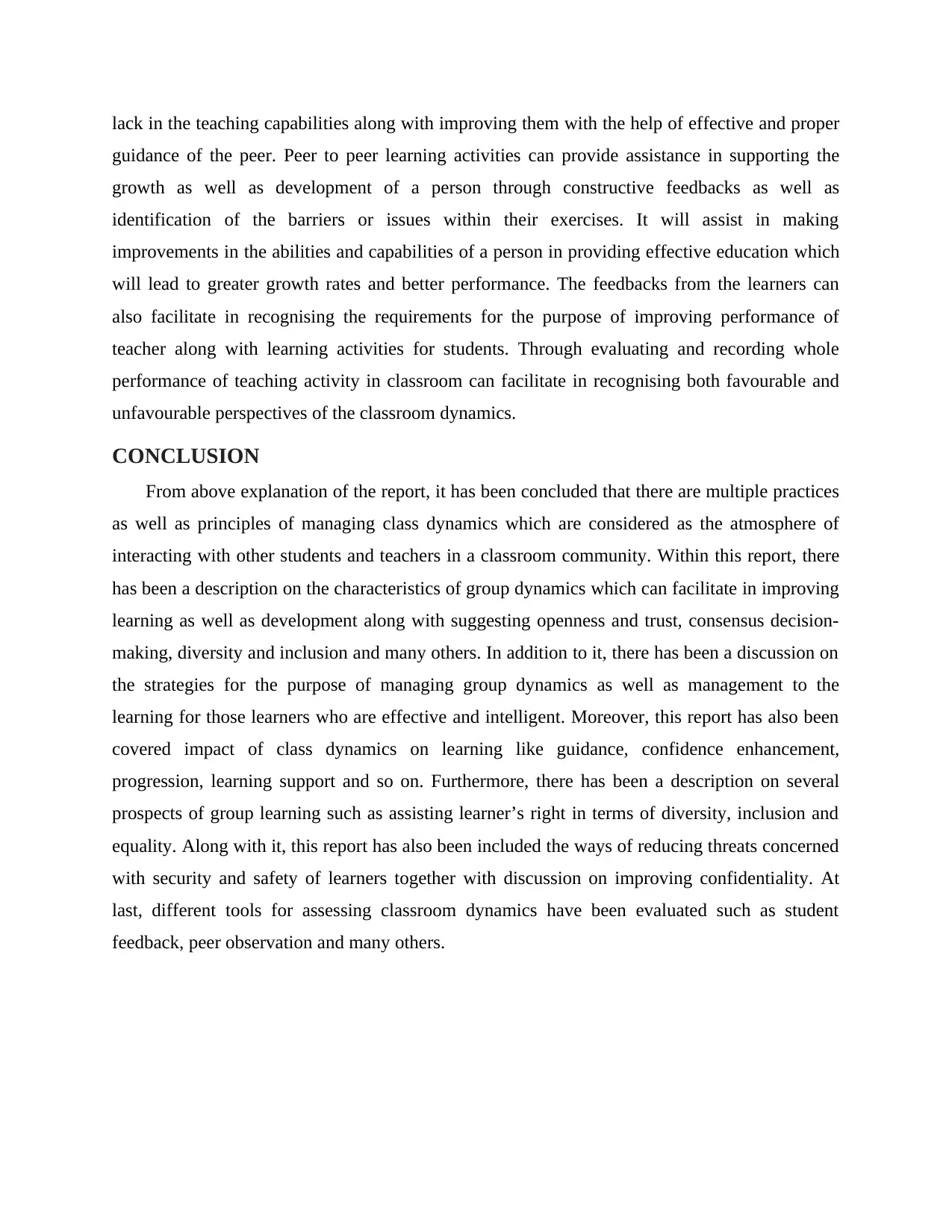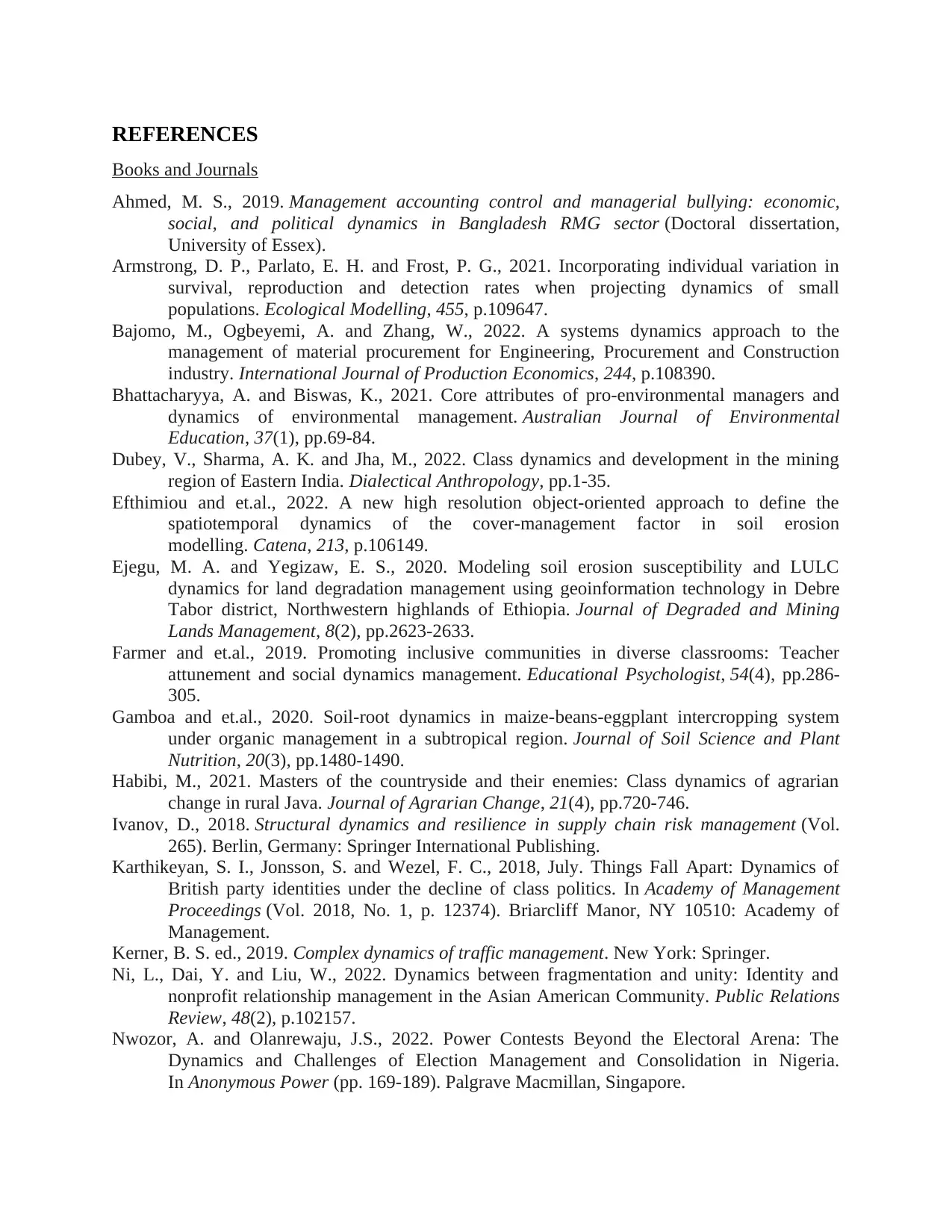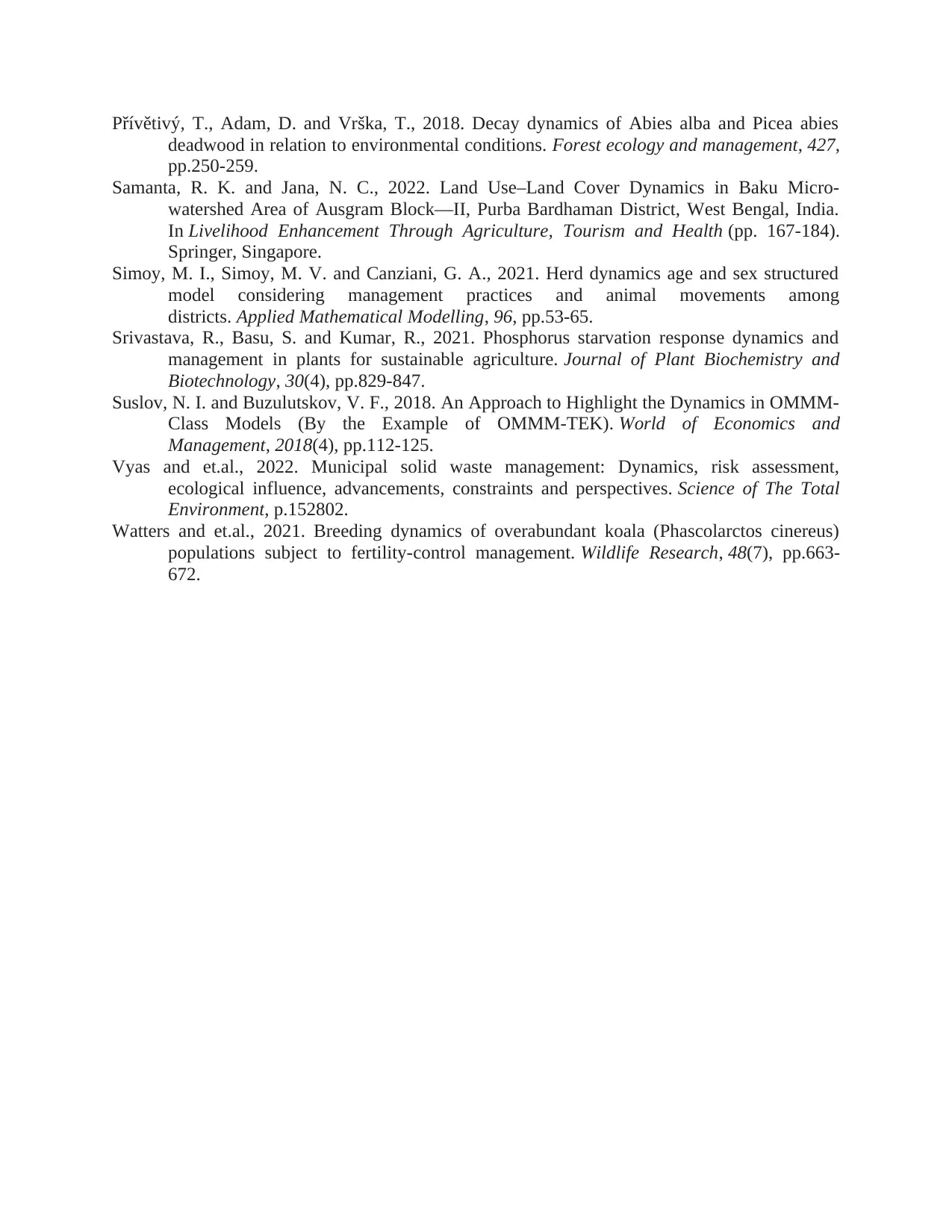This report discusses the principles and practices of managing class dynamics, ways to involve learners in management of their own learning and development in groups, and strategies for managing group learning environments. It also covers how to assess classroom dynamics and manage barriers to individual learning in groups. The report provides insights into the characteristics of group environments that help in learning and development, evaluation of strategies to manage group dynamics, and ways to involve learners in managing their own learning and development in groups. It also discusses the impact of class dynamics on learning, ways to facilitate collaboration and learning between group members, and tools for assessing classroom dynamics.
![[object Object]](/_next/static/media/star-bottom.7253800d.svg)
![[object Object]](/_next/static/media/star-bottom.7253800d.svg)
